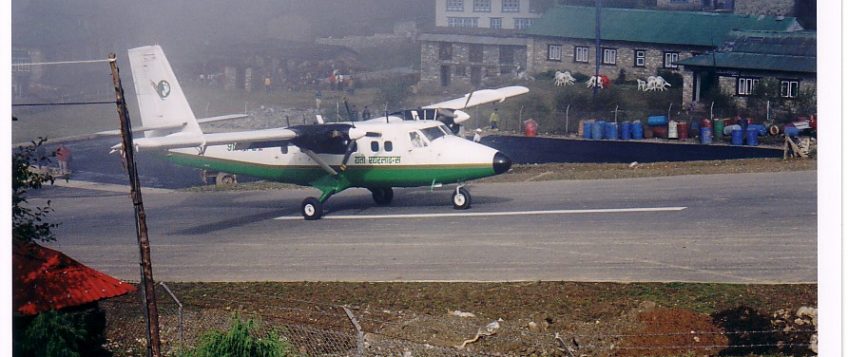Aviation Nepal – Domestic Flights

The domestic airports in Nepal get busiest during the autumn season. Winters are a little less active and the spring season is more active than winter. The most active airport is Tribhuvan International airport in Kathmandu as both the international and domestic flights take place from there. The single runway often creates delays during the busy months of October, November, and December. To give preference to the International flights, the civil aviation authority of Nepal holds up the domestic flights, causing a domino’s effect on the internal flights. This October the domestic flights were delayed by as much as three hours; in some instances, the later flights get canceled due to the delay of earlier flights.
Short Take Off and Landing airstrips (STOL).
The early morning flight slots are given to the flights to Short Takeoff, and Landing (STOL) strips such as Lukla and the Everest scenic flights from Kathmandu while the flights to Jomsom in West Nepal takes place early in the morning from Pokhara.
The flights to Lukla are booked solid from mid-September to mid-November, mid-March to late April. Similarly, the flights to Jomsom are busy from September to April with western trekkers followed by Indian pilgrims from May until September who visit Muktinath Temple for Salvation.
Kathmandu and Pokhara airport terminals.
The airport terminals are crowded in the mornings with trekkers trying to get to their starting point of Lukla from Kathmandu, Jomsom, from Pokhara, Juphal, Simikot, Jumla and Talcha from Nepalgunj in mid-West Nepal.
Nepalgunj airport terminal.
Nepalgunj is the hub for flights to all the remote STOL airports of Mid and Far West Nepal. The summer and autumn of 2017 were jam-packed with Indian Pilgrims flying to Simikot to go to Mount Kailash in Tibet. The majority of the Indian pilgrims used to Kailash from the road border of Kodari which has been closed post the earthquake of April 2015, the second border crossing at Kerung hasn’t been opened for foreign tourists. The only gateway to Kailash this year was via Simikot and the border at Hilsa. Rather than fly into Kathmandu for the pilgrimage, they came from the Indian border into Nepalgunj. Due to this most hotel in Nepalgunj saw a tremendous increase in hotel bookings. In fact, as the months from June to September falls during the monsoon season; quite a lot of flights got canceled making things chaotic for tour operators, hotels, airlines and the helicopter companies.
The system when flights get canceled.
When flights to or from Lukla and Jomsom are canceled due to bad weather, the passengers from that day go to the end of the queue, e.g., they only get to fly after all the passengers for the next fly off. This can create a huge backlog when the weather is terrible for a few days. However, when flights from or to Nepalgunj are canceled, the opposite is practiced. The passengers from the canceled flights from the previous day get priority; this is problematic for the passengers booked to fly on that actual day.

Helicopter Charters.
When the weather turns bad for several days, this is when desperate passengers who want to get to the start of their journey or to get back home charter helicopters. This is the period when the cost of each seat in a chopper increases tremendously. Some unscrupulous “businessmen” book all helicopters to create a shortage of seats to raise the price to their desires making huge profits.
Interesting practices at Nepalgunj airport.
Nepalgunj is the hub to almost all remote airstrips in Mid and Far West Nepal. This region is far underdeveloped compared to the rest of Nepal, the outlying areas here can be called the “Wild West.”
I was there in September to lead a trek in Dolpo district. Our flight got canceled the day we were supposed to fly by the rains of the tail end of the monsoon. We couldn’t fly the next day as our airlines’ crew had their weekly day off and the other airline flying to Juphal was busy handling their own delayed passengers. We had an extra day in Nepalgunj to “kill”; most locals told us there isn’t much to do there at all. I was told by my ticketing agent to get to the airport at 6 am as we were on the first flight. When we got there at 6 am, the station manager of the airline yelled at me for coming late, and our five seats were given to another group that consisted of 4 trekkers and their guide, just like us. I knew this was all a trick to sneak in other passengers in our place, despite being in this profession since 1988, one is always learning something new. There were locals yelling, shouting, banging on the airline counter demanding that either they or their relatives be given the very next available seat. Foreigners and their staff has priority over local passengers as the tourists pay twice if not more airfare than locals.
Source: Responsible Adventures

